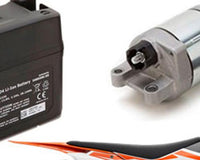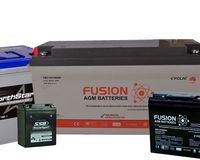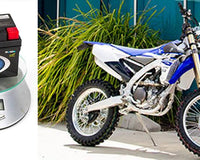If you’re a user of heavy duty, commercial batteries, then this article might come in handy for you.
Obviously, batteries don’t last forever and need to be charged every now and then. Luckily with newer batteries, you don’t need to charge them as often. However, it is still important to make sure you're taking steps to charge your battery properly.

Sometimes need to apply a topping charge. This is the case with lead acid and nickel-based (NiCad and NiMH) batteries. Lithium-ion batteries need to be charged for 14-16 hours and also may need to be primed.
On nickel-based batteries, it is important to only apply a full discharge to calibrate a smart battery and to prevent the memory effect*.
Lithium-ion batteries are maintenance-free and the battery lasts longest when operating between 30 and 80 percent SoC.

With lead acid batteries, it is important that you store them on a full charge, and to fully charge them every few weeks, as a low charge can cause sulfation.
In order to calibrate a smart battery, it is important to apply discharge/charge when the fuel gauge gets inaccurate. Repeat this process every 1–3 months.
NiCad and lithium batteries will be fine if you store them on a partial charge. Lithium batteries should be stored partially charged too, and in a cool place, as storing them on a low charge may result in the protection circuit switching off. When in storage, make sure you keep your battery at a moderate temperature, where they won’t be exposed to extreme heat or cold. Lithium-ions tend to fare better in a cool environment, at 50 percent SoC.

When it comes to disrupting the charge cycle, repeat charges can cause a heat build-up in NiCad batteries . The partial charge typically causes no harm to lithium batteries. When it comes to lead-acid batteries, partial charge causes no harm when applying periodic fully saturated charges.
It is also important to avoid ultra-fast and rapid charging. Charge Li-ion Energy Cells at less than 1C (below rated Ah); Power Cells are more rugged and can be charged and discharged at a higher rate. NiCd is the only battery that can be fast charged up to 70 percent SoC without adverse side-effects.
And if you plan on charging with the device on, a parasitic load can alter full-charge detection and overcharge battery or cause mini-cycles in NiCad and lithium batteries. And if possible, avoid loading lead-acid batteries.
*The memory effect is when nickel-cadmium batteries gradually lose their maximum energy capacity if they are repeatedly recharged after being only partially discharged. The battery appears to "remember" the smaller capacity. More on that in this article.









